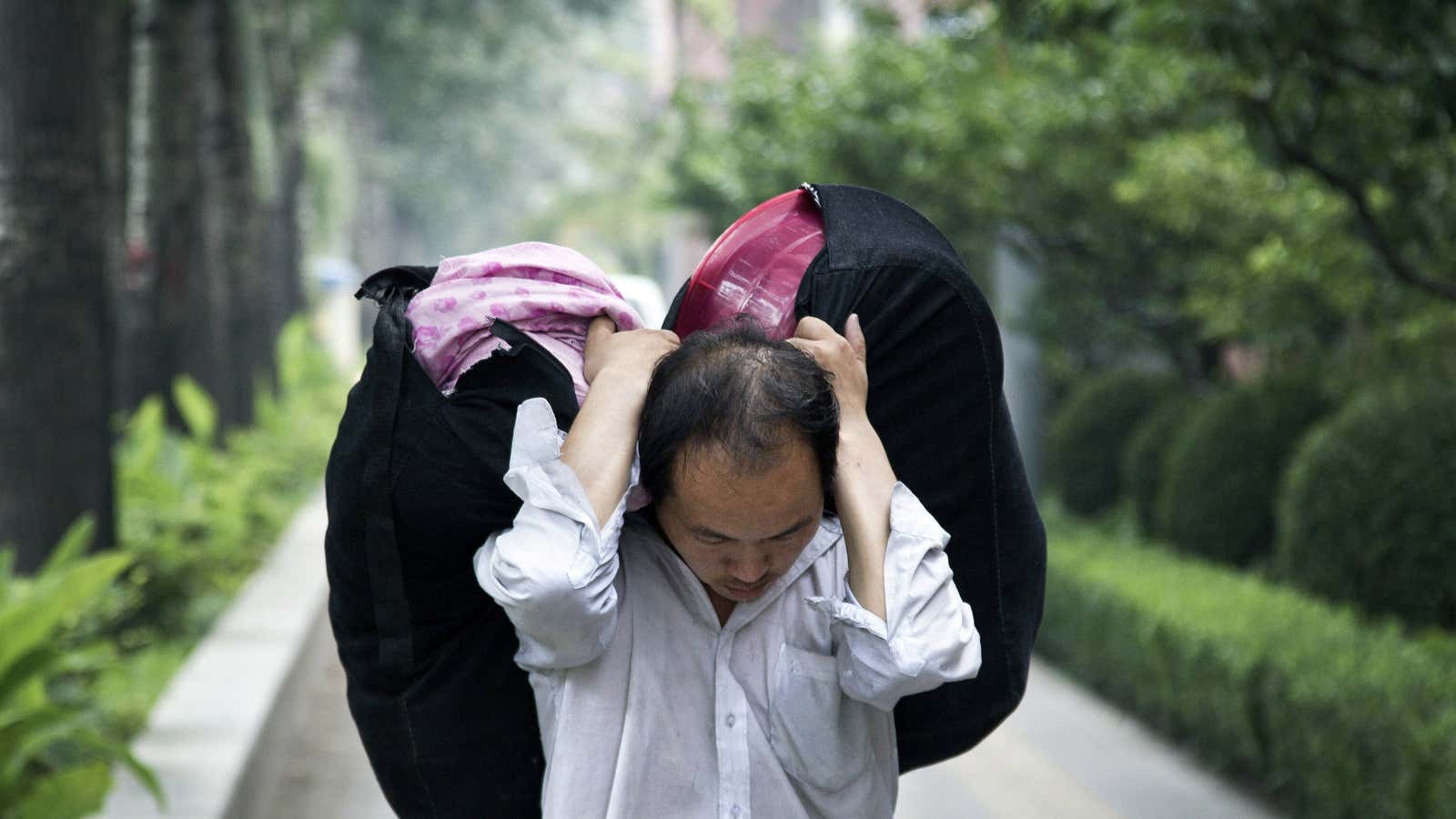The West has declared the “end of cheap China” for some time now. Increased wages, high rents, and increasing legal costs have been the trend for about eight years. It’s a relatively new phenomenon for Chinese workers to strike for pay increases above the legal minimum wage. In 2010, huge auto strikes resulted in wage hikes of up to 50% or more. But since that time, workers have continued to win economic gains and thrown out union officers that are cozy with management in order to elect their own representatives. Last year, the All China Federation of Trade Unions set a target to unionize 90% of all enterprises by the end of 2013. And there is there is now evidence that more workers are getting employer contributions to health insurance, pensions, and other forms of social insurance.
But let’s not get carried away, China is still no workers’ paradise. Despite official claims of the Chinese preference for “harmony,” collusion between local governments and employers is endemic, and unions are largely an arm of the state. Although the government enacted a series of generally pro-labor laws in 2008—including efforts to increase employment stability and to facilitate dispute resolution—these laws are frequently unenforced. Any attempt to organize in multiple workplaces or outside of the official union structure is met with swift and severe repression. Despite some improvements, ongoing economic trouble in the West has pushed large multinationals to continue to exert downward pressure on their supplier factories in China, which in turn force their workers to produce more while working longer hours for less money. Whether or not the Chinese dream exists is debatable, but if it does, the Chinese working class is certainly not living it yet.
Today, there is a major shift afoot in the geography of Chinese capitalism: a “journey to the West” for investors. This westward relocation of investment will change many of the social and economic dynamics in China, though which direction things will go is still unclear. While employers and local governments in coastal areas may bemoan this change, it is important to note that the shift is not accidental—the central government has been pushing this for years in an attempt to reduce regional inequality. If increased labor costs look like the “end of cheap China” to foreign investors, it may be the “beginning of domestic consumption” from the central government’s perspective. Given ongoing economic instability in export markets, it’s understandable why they might be interested in this.
Many workers are no longer willing to travel long distances to the coast to work in bad conditions for long hours and low pay—things their parents may have accepted more readily. People born in the 1980s and 1990s didn’t grow up in the same desperate poverty as the previous generation. Even if wages have gone up in recent years, the average factory worker is still a long way from being able to live a comfortable life in the city. So despite the fact that China still has approximately 700 million rural residents, employers in manufacturing areas on the coast have faced an occasionally severe labor shortage for a number of years.
From 1990 to 2005, the western province of Sichuan was the single largest source for inter-provincial labor migration in the country. But as of last year, the province has more migrant workers employed within its borders than it does working in other provinces. This is an astonishing development as the first six months of this year was the first time in China’s reform era that there has been a reduction (-4.1%) in out-migration from Sichuan.
The backbone of China’s private manufacturing sector—the people who make everything from iPhones and car parts to socks and lawn ornaments—have come from the countryside to coastal cities in search of a better life. But they have been searching in vain. Rural residents are excluded from the urban system of social welfare, which means that they don’t get any of the housing, retirement, or health benefits that city dwellers get. Perhaps most importantly, they can’t send their kids to public schools in the cities they have literally built. Even if they can get somewhat better wages in coastal factories, this is no place to make a life.
So migrant workers have been leaving places like Shanghai, Shenzhen, and Guangzhou and heading back to the central and western provinces where they originally came from. And guess who’s following them? Employers, because they believe they will find cheaper wages and more abundant labor. The best known-example is Foxconn which has already shifted much of its production to interior cities like Taiyuan, Zhengzhou, and Chengdu.
Just as peripatetic investors fled the earlier developers of South Korea, Taiwan and Hong Kong for the greener pastures of Guangdong and Shanghai, today they are once again on the move. Whether this will initiate another cycle of rapid growth and help China avoid slowdown is unclear. But enterprises that move to the interior will be employing many of the same people that used to work on the coast. And as the recent strike and riots at Foxconn’s new inland facilities seem to suggest, bad labor conditions and consequent worker unrest may persist.
And in interior cities, migrants will have an easier time getting the household registration that will give them access to social services such as education and pensions. This may allow for the creation of more stable workforces and communities, something which has been severely lacking in coastal regions. This should be a welcome development for Chinese workers as they struggle to make a decent life for themselves.
